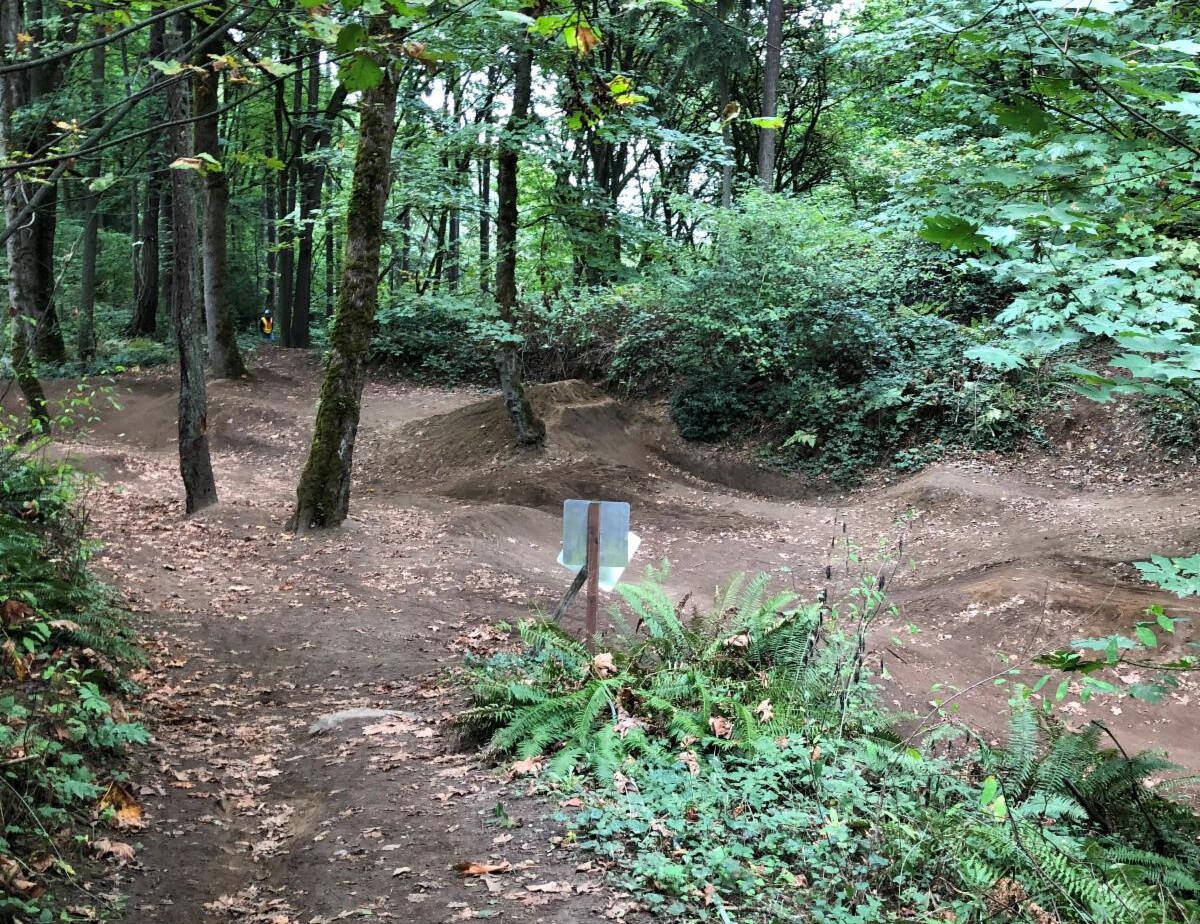About five weeks after temporarily closing the Upper Luther Burbank Park Bike Skills Area (BSA), the city held a virtual public meeting regarding the future of the site.
On Nov. 15, about 80 participants — including BSA riders — joined city staff members to listen to consultant Mike McIntyre of Action Sports Design (ASD) offer his initial assessment of the area, which was shuttered on Oct. 7 due to significant operating challenges and safety concerns for approximately six months.
Many of the attendees provided valuable input during the meeting, which included a report on the upcoming work to address impacts on soils and vegetation and a consideration of potential modifications of the site — also known as the BMX Course or Snake Hill — according to Alaine Sommargren, the city’s deputy director of Public Works, in an audio recording of the meeting.
The BSA, which consists of biking trails and jumps, has been in existence for a few decades and the city has seen an immense increase in site usage over the last couple of years. Sommargren noted that several issues have come to the forefront to warrant the closure: unauthorized course expansion and construction of new trails and large jumps that exceed the posted guidelines, and the city’s maintenance staff has been unable to keep up with the recent demands.
ASD was called into action to fully assess the site and provide the city with recommendations about improving the area. ASD is an Austin, Texas-based professional planning designer and developer of public bike parks, BMX racetracks and skateparks worldwide.
Starting with an Oct. 25 online survey focused on current BSA users, the city received 95 responses and learned that 43 percent of the users who participated are over 25 years old and 42 percent are ages 10-16; the majority want more mountain bike-specific jumps, more jumplines and an improved return line to the session pad (starting point of the course); and some riders want more jumps for beginners and young riders.
During his assessment, McIntyre mapped the course and the jump layout, and perused circulation patterns within the course and surrounding trails along with the drainage on the site.
One of his initial findings is that the main trail leading to the BSA is shared with pedestrians and could lead to trail conflicts or other trail issues. In a poll at the meeting, 39 participants wished to see a dedicated trail for bikers to access the session pad; three said they’d like riders to be required to walk their bikes on trails to the BSA; and four said they’d like to see a barrier erected between the BSA and the hiking trail on the west side.
Regarding tree assessment, a city arborist discovered that trees closest to the active use area are declining most likely from root damage from digging, soil compaction from jumps when they were built and grade changes. Four trees are slated for removal, and the remaining trees will be monitored regularly, Sommargren said.
As for the jumpline layout, the BSA currently features seven mountain bike jumps, which ASD feels can be improved by softening the steepened edges to avoid deep fall zones, and creating drainage swales to channel water appropriately out of the site.
“The bottom line is that ASD feels very strongly that the jumps that are at the site currently could be improved in order to maximize the space and also to maximize the skill building for the riders who are using the site currently,” Sommargren said.
At the meeting, McIntyre proposed two high-level potential jumpline layout options, including one with a feeder line splitting into two different jumplines and one with a feeder line splitting into one jumpline and one skills line. Each has their own set of three jumps. In a poll, 25 people favored the first layout and 11 voted for the second one.
A few of ASD’s preliminary recommendations to the city are that the BSA include professionally designed jumps that should be maintained in their designed form with no alterations from riders; improve the BSA within its existing footprint; and the city restore soil to the undercut hillsides and tree root zones.
Next up, Sommargren said the city will work with ASD to develop a second user survey focused on jump design and layouts. After receiving ASD’s finalized assessment report and recommendations in December, the city will begin work on the site and possibly reopen the area in the late spring or early summer of 2022. Currently, the city doesn’t have a dedicated budget for the BSA, she said.
Community members have provided vital input into how to improve the BSA, Sommargren said.
“We are so thankful for all of the community members who have been so involved with this project and so passionate about it,” she added.
For more information, visit https://letstalk.mercergov.org/bike-skills-area-at-upper-luther-burbank-park


